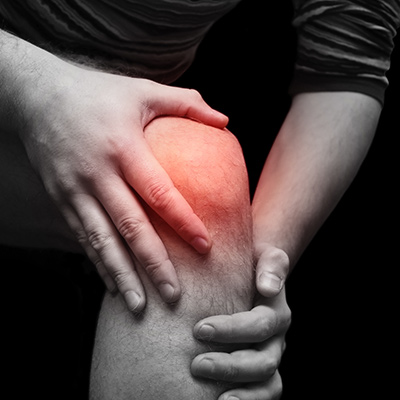
Nearly one-fifth of patients who undergo knee surgery to reconstruct a torn anterior cruciate ligament (ACL) eventually need to have additional surgery on the same knee, according to recent research published in the American Journal of Sports Medicine. The study, which was funded by the NIH’s National Institute of Arthritis and Musculoskeletal and Skin Diseases, also clarified key risk factors associated with the need for subsequent knee surgeries.
Rupture of the knee’s ACL is a common sports-related injury. It is associated with other knee problems, such as meniscal tears and knee instability. Over the long term, it can lead to knee osteoarthritis. Some patients are able to cope with an ACL tear with physical therapy and rest, but most active people undergo surgery to reconstruct the ligament to restore knee function and prevent further tears.
“Although ACL reconstructive surgery is common and often successful, we have not known the rate and risk factors for subsequent knee surgery until now,” said senior author Kurt Spindler, M.D., of Vanderbilt University.
In the Multicenter Orthopaedic Outcomes Network (MOON) study, Spindler and his colleagues followed nearly 1,000 people for several years after the patients underwent initial ACL reconstruction. They wanted to determine the rate at which additional surgeries were performed, and to identify specific risk factors that lead to additional surgeries. The median age among patients at their initial surgery was 23.
Six years after surgery, about 19 percent of participants had undergone at least one more surgery on the initial damaged knee. In addition, 10 percent had undergone surgery on the other knee—6.4 percent of these procedures were to reconstruct a ruptured ACL. Patients who had ACL surgery earlier in life were more likely to have subsequent surgeries, a finding that echoes previous research. “These young people typically are more athletic and active, and might be less likely to fully comply with post-operative instructions,” said Dr. Spindler. “It’s also possible that they have biological differences that predispose them to injury and re-injury,” he added.
Patients with ligaments taken from a cadaver to reconstruct their ACL, rather than a ligament from their own bodies, were also more likely to undergo additional surgery. Previous research has suggested that using cadaver-sourced ligaments may lead to an increased risk of immune-incompatibility and could potentially transmit infectious diseases, although the risk for passing on disease is very low. The MOON findings provided further evidence of the possible hazards associated with using them. Unlike other research, however, the researchers did not find that women or those with a higher body mass index were at an increased risk for subsequent surgery.
The results of the MOON study provide patients, parents, healthcare providers, coaches and trainers with valuable information about the risks associated with ACL surgery, as well as ways in which patients may reduce their chances for needing subsequent surgery.
The study was funded by the National Institutes of Health grant numbers R01 AR053684 and K23AR052392, and the Agency for Healthcare Research and Quality grant number U18HS016075. The ClinicalTrials.gov identifier for the study is NCT00478894.
# # #
Hettrich CM, Dunn WR, Reinke EK, MOON Group, Spindler KP. The rate of subsequent surgery and predictors after anterior cruciate ligament reconstruction. Am J of Sports Med. 2013; 41(7):1534-1540. DOI: 10.1177/0363546513490277.PMID: 23722056.
The mission of the NIAMS, a part of the U.S. Department of Health and Human Services' National Institutes of Health, is to support research into the causes, treatment and prevention of arthritis and musculoskeletal and skin diseases; the training of basic and clinical scientists to carry out this research; and the dissemination of information on research progress in these diseases. For more information about the NIAMS, call the information clearinghouse at (301) 495-4484 or (877) 22-NIAMS (free call) or visit the NIAMS website at https://www.niams.nih.gov.
